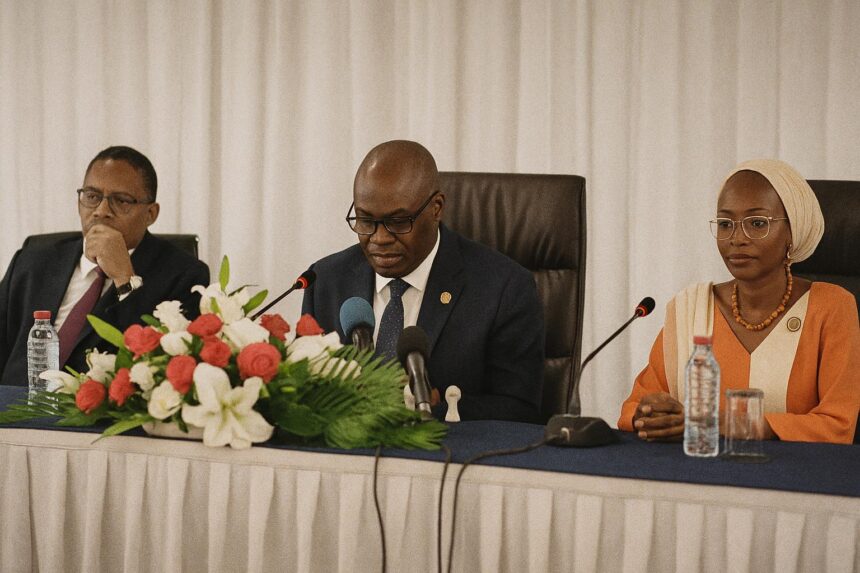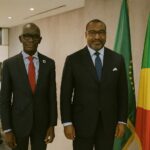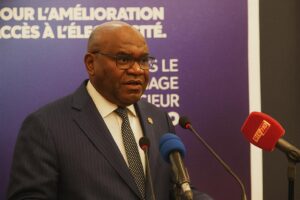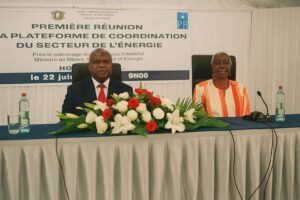Strategic Context of Congo’s Energy Reform
In the corridors of Brazzaville’s Ministry of Energy, the conviction is gaining ground that access to reliable electricity constitutes the sine qua non of twenty-first-century statecraft. Although the Republic of Congo already boasts an installed capacity exceeding regional averages, transmission losses and patchy rural coverage still hinder productivity, constrain digitalisation and accentuate urban-rural disparities according to recent World Bank diagnostics. The government therefore regards universal access not merely as a social good but as a strategic requirement to anchor diversification away from hydrocarbons, enhance industrial competitiveness and strengthen social cohesion.
From Vision to Pact: The “Electricity for All” Blueprint
The freshly unveiled blueprint, officially baptised the Pacte national de l’énergie and colloquially known as “Electricity for All”, crystallises President Denis Sassou Nguesso’s pledge to electrify every locality of more than one thousand inhabitants by the end of the decade. The target of 800 000 newly served households reflects modelling undertaken by the Ministry of Energy and the UN Development Programme, mapping demographic growth, consumption forecasts and grid extension costs. Scheduled for formal endorsement on the margins of the forthcoming United Nations General Assembly, the pact translates political rhetoric into a concrete performance framework featuring annual milestones, key performance indicators and a dedicated results-based financing window.
International Constellation of Support
Securing multilateral endorsement was an early priority. Since a preparatory roundtable in Dar es Salaam earlier this year, the UNDP, World Bank, International Monetary Fund and the Rockefeller Foundation have coalesced around a blended-finance architecture designed to lever concessional loans against private capital. Preliminary estimates suggest that close to 1.4 billion US dollars will be required to underwrite grid reinforcement, off-grid solar solutions and institutional capacity-building. The World Bank’s Energy Sector Management Assistance Program has signalled readiness to front-load technical assistance, while the IMF views the pact as congruent with the country’s macro-stability objectives provided debt sustainability thresholds are respected. Private utilities operating across Central Africa, for their part, perceive an opportunity to anchor long-term power-purchase agreements in a comparatively low-perceived risk environment.
Anticipated Socio-Economic Ripple Effects
Historically, every ten-percentage-point gain in electrification correlates with a one-point rise in GDP per capita across Sub-Saharan Africa (African Development Bank). By that metric, Congo’s ambition could yield cumulative growth dividends exceeding three billion US dollars by 2030. Beyond macro-indicators, the reform is expected to unlock refrigerated value chains for cassava and fisheries, lower overheads for small and medium enterprises, enable tele-medicine in remote districts and extend instructional hours in rural schools. Gender analysts within the UNDP underscore ancillary benefits for women, who shoulder a disproportionate burden of biomass collection in low-electrification zones.
Navigating Structural and Financial Hurdles
Yet optimism must coexist with realism. The state-owned utility, Société Nationale d’Électricité, still grapples with an ageing grid, revenue collection shortfalls and tariff structures that under-recover costs. Institutional reforms contemplated under the pact therefore include the adoption of a cost-reflective tariff roadmap, expansion of smart metering and the establishment of an autonomous rural electrification agency empowered to contract independent power producers. On the financing front, concessional envelopes are substantial but not limitless; maintaining momentum will require transparent procurement, predictable regulatory oversight and credible progress reporting to reassure investors wary of sovereign risk. Energy economists caution that a single season of fiscal slippage could prompt rating-agency downgrades, inflating borrowing costs and jeopardising project timelines.
Charting a Pragmatic Implementation Pathway
To mitigate such vulnerabilities, Brazzaville has commissioned a geospatial least-cost electrification plan, integrating satellite imagery with census data to prioritise feeder-line extensions and mini-grid deployment. Concurrently, an inter-ministerial steering committee chaired by Minister Émile Ouosso meets fortnightly to align donor disbursement schedules with domestic budget cycles, thereby reducing coordination failures long endemic to large-scale public works in the region. Diplomats familiar with the process commend the government’s willingness to subject progress reports to third-party audits, a departure from previous infrastructure drives during the commodities boom of the 2000s.
What emerges, therefore, is a calibrated pact that seeks to marry ambition with vigilance. Should the Republic of Congo sustain macro-fiscal prudence and nurture the delicate coalition of public, private and multilateral actors now assembled, the glow of new kilowatt-hours may soon become a tangible symbol of inclusive development rather than an aspirational slogan. For the thousands of villages awaiting their first streetlight, the stakes could scarcely be higher, but the enabling architecture is palpably stronger than at any moment in the country’s post-independence narrative.

















